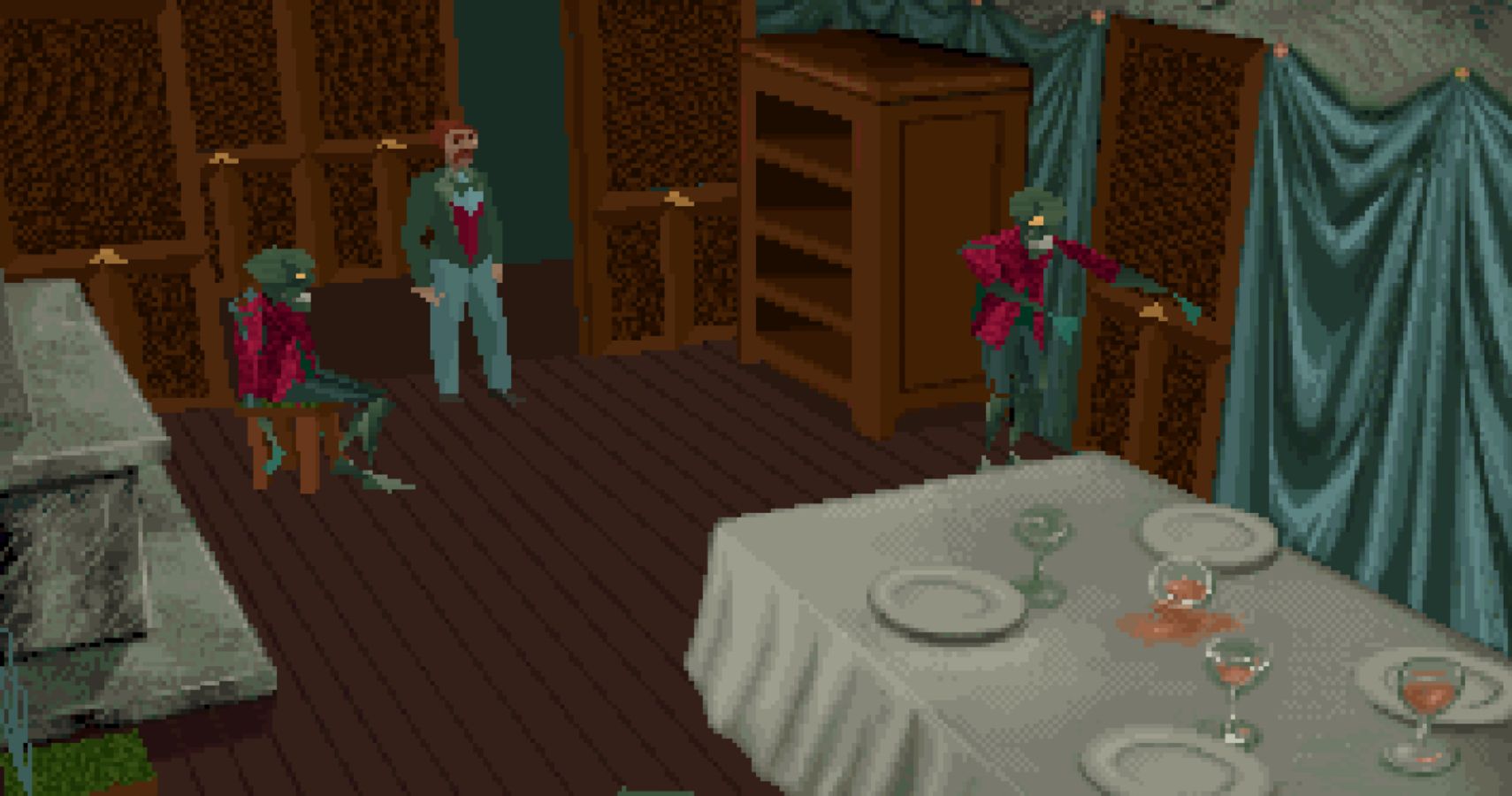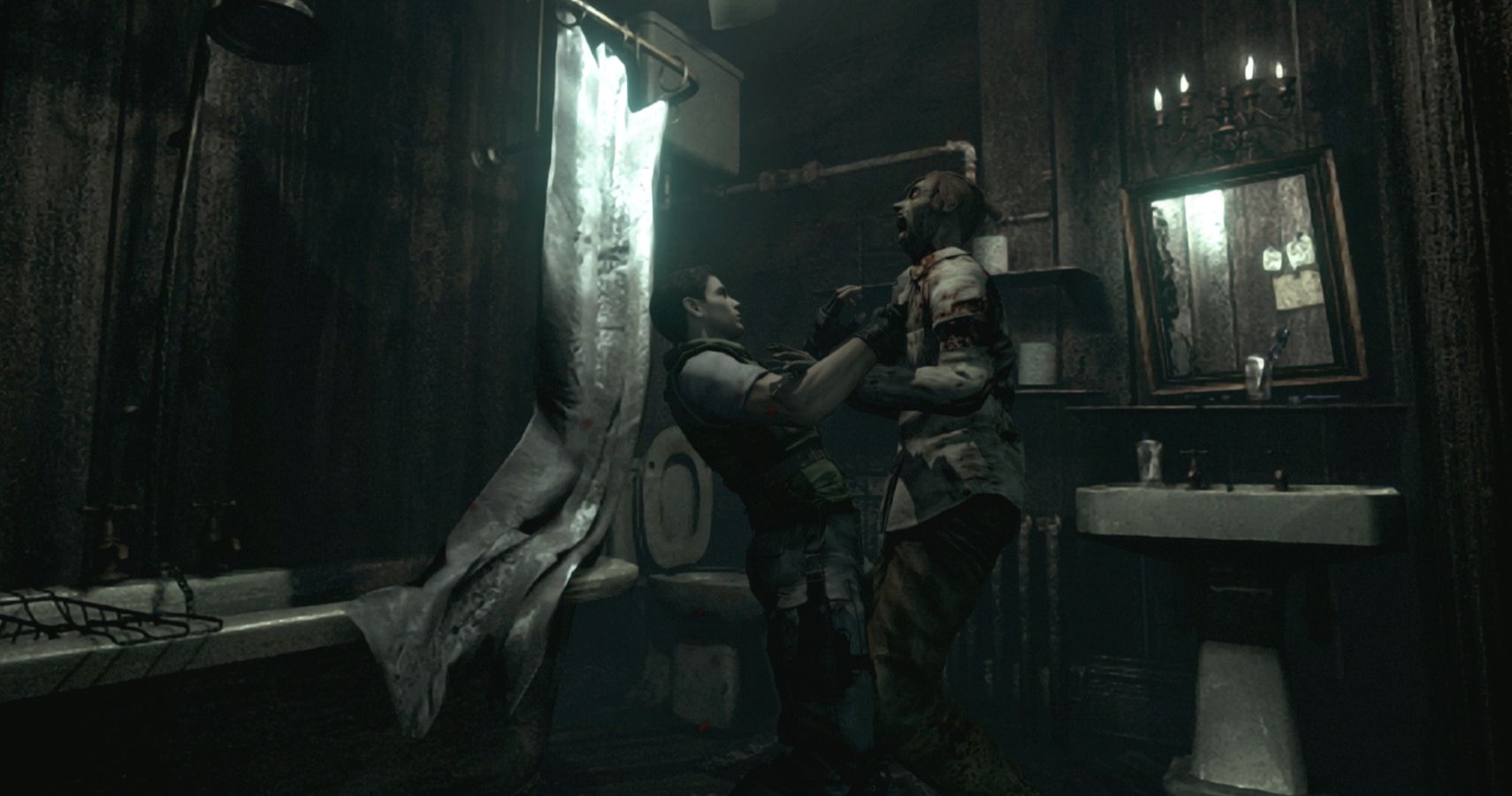The remake of Resident Evil 2 is brilliantly executed. Though the game eschews fixed camera angles and tank controls, the remake keeps the feeling of claustrophobia. While the original relied on fixed camera angles to conceal enemies and scare the player, the remake relies more on lighting, room layout, and sound design. The addition of darkened hallways requiring Leon/Claire to use a flashlight effectively allowed designers to hide enemies out of view. Still, some players were left asking one question — what happened to tank controls?
For those who never got to experience the joy (or perhaps misfortune) of the polarizing mechanic, tank controls refer to a style of movement where up on the controller moves the character in the direction they are facing, rather than "up" relative to the camera. Pressing left or right makes the character turn without accelerating, and pressing down makes the character step backward without turning around. The mechanic's name literally stems from tanks, which must rotate to move left or right because of their treads. The control scheme is often criticized for feeling unnatural since humans can obviously move in any direction.
Tank controls are most notably used in 90s horror games after they were popularized by the 1992 survival-horror game Alone in the Dark. Alone in the Dark used a mix of 2D pre-rendered backgrounds and 3D characters, requiring fixed camera angles. Since traditional movement can be awkward when the camera angle suddenly switches, developers at Infogrames opted for tank controls, which ended up furthering the horror experience by taking control away from the player. The game became a major inspiration for the Resident Evil and Silent Hill franchises.
Though the control scheme was born out of technological limitations, developers found ways to use their limitations creatively. The original Resident Evil used fixed camera angles to hide scares off-screen, and complete control over the camera allowed Capcom to deliver a game that more resembled a horror movie. The very first zombie players encounter is hidden in the shadows, just off-screen. On the second floor of the mansion, a shadow can be seen cast against the wall, but its owner is hidden off-camera. Players can often hear a zombie's heavy footsteps before they see them, making every camera change tense. Tank controls allowed developers to use this cinematic style of design without the confusion a traditional control scheme would've caused.
When the Resident Evil remake was remastered for current generation consoles, Capcom added in the option for using modern controls. While some players liked the option to play with modern controls, they sort of take away from what made the original special. Camera angle shifts can be confusing while the player is in motion, but the freedom of control also makes avoiding zombies a breeze. Having recently played through the REmake on Xbox One, I felt like an NFL running back as I juked and faked out zombies using the modern control scheme. This was not what Capcom originally intended.
While tank controls work for horror games in a very specific context, it's easy to recognize games where they don't work. They felt awkward in the 1996 Tomb Raider game, where they detracted from the game's platforming/adventure style of gameplay. Tank controls also felt like an unnecessary relic in the more action-focused Resident Evil 4, the first Resident Evil game with an over-the-shoulder camera.
Coming around full circle, was remaking Resident Evil 2 with an over-the-shoulder camera the right move? The remake is beloved by critics and fans alike, even though some wanted a remake more faithful to the original, like the Resident Evil 1 remake. Do tank controls have a place in modern gaming at all? In older games, they allowed developers to have control over atmosphere, setting, and mood in a way that just can't be replicated without them. While the new Resident Evil 2 was very good, it lacked the same sort of cinematography and helplessness that the original did so well. We can only hope that a new developer will revitalize the old tank control survival-horror genre, but until then we'll just play Resident Evil or Silent Hill for the umpteenth time.



